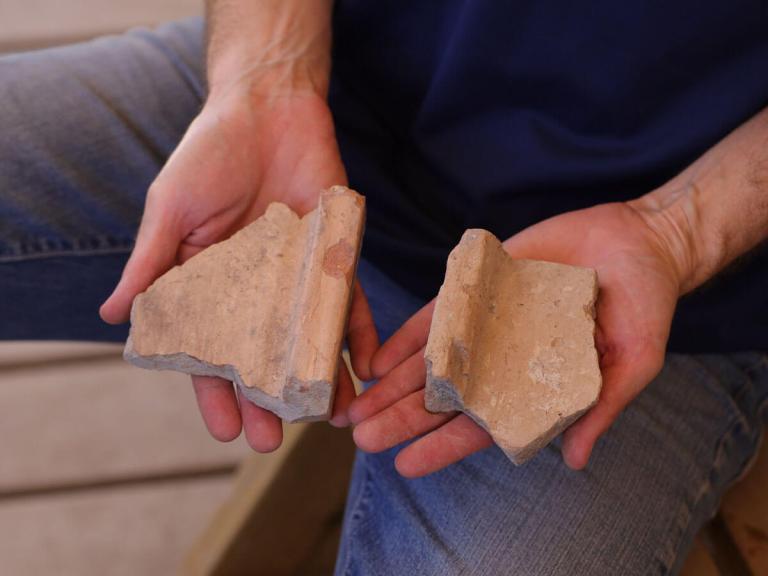
The oldest roof tiles ever have been discovered in the Givati Parking Lot excavation in the City of David. The six ancient ceramic roof tiles have been dated to the second century BC and are significant because of their Hellenistic or Greek style, which would not become a prominent feature in Israeli architecture until nearly a hundred years later during the Roman period of Israel’s history. Ceramic roofing tiles first came about during the 7th century BC in Greece and were useful for their durability and water resistance. In a press release, researchers stated that the “Tiles were very rare in our region during this period, and they were alien to local construction traditions, indicating that the technique of using tiles to roof parts of a tower or a structure inside that famous fortress was brought from Greek-controlled areas by foreign rulers…”
During the 2nd century BC, the Greek Seleucid dynasty, led by King Antiochus IV (also known as Antiochus Epiphanes) held dominion over the City of David, introducing the tiles, which really were not necessary for the low-rain climate of Israel. “The climate and the relatively low precipitation in Israel, as well as other factors, do not justify the use of tiles for roofing, yet Antiochus still chose to make use of these roof tiles, probably for cultural reasons and to make a statement, by introducing Greek monumental material culture in the country at a short distance from the Jewish Temple,” said Filip Vukosavović of the Israel Antiquities Authority (IAA). “It is therefore probably not incidental that with the collapse of Seleucid rule and the ascent of the Hasmoneans, roofing tiles disappeared from Jerusalem, until the arrival of the new Roman conquerors.”
This time period is particularly significant for the role it plays during the Jewish holiday of Hanukkah. During Antiochus’s reign, Greek soldiers occupied the Holy City until the Maccabean Revolt during 167-160 BC. The Jewish celebration of Hanukkah celebrates the victory of the Maccabees as they drove Antiochus’s forces from the Temple and rededicated it. During his occupation of the region, Antiochus built an impenetrable fortress known as the Acra, which allowed Greek soldiers to maintain a presence in Israel even after the revolt. The location of the Acra has been hotly debated, but this recent find has confirmed to some that the remains of a fortified building found in the Givati Parking lot may indeed be the ancient fortress’s remains. “The architectural remains uncovered over recent years have reopened the debate, and they actually strengthen the identification of the fortress on the City of David Hill,” said Dr. Ayala Zilberstein of the IAA and Tel-Aviv University. The timing of the find allowed the remains to be displayed to the public on the fifth day of the Hanukkah holiday. Dr. Vukosavović was thrilled by the find. “Until now, we had little material evidence for the presence of the Seleucid Greeks in Jerusalem. The new tiles discovered in the City of David provide tangible remains of the Seleucid Greek presence in the region, linking us with the story of Hanukkah. It’s very exciting to encounter the Seleucid ruler Antiochus iv ‘face-to-face’, almost 2,200 years after the events of Hanukkah.”


